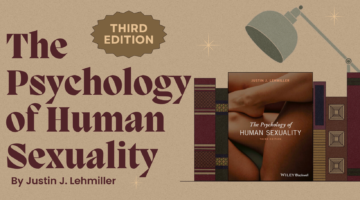Did PMS Evolve In Order To Split Up Infertile Couples?
August 14, 2014 by Justin Lehmiller
Premenstrual syndrome (or PMS as it is more commonly known) is a catchall term for any unpleasant physical and psychological symptoms a woman might experience just prior to getting her period. Research suggests that as many as 80% of women experience PMS; however, the nature and severity of the symptoms varies dramatically across individuals [1]. On the surface, PMS might not appear to be an adaptive trait, especially considering that, at least for a very small percentage of women, the symptoms are so severe as to become debilitating (in which case it may be referred to as premenstrual dysphoric disorder, or PMDD). But if PMS is so widespread, is it possible that perhaps it came to exist for some evolutionary reason? That’s what Dr. Michael Gillings argues in a controversial new paper just published in Evolutionary Applications [2].
If you are not familiar with evolutionary psychology, one of the basic ideas behind it is that our bodies and behaviors have evolved over time in ways that serve to enhance our own survival and our ability to sexually reproduce. In the case of PMS, Gillings argue that it might have been adaptive in another time and place by helping women to produce more offspring. How so?
Gillings’ logic goes like this: In our evolutionary past, contraception did not exist and, therefore, women had no control over menstruation or PMS symptoms. In those days, women were frequently pregnant, and we know that during pregnancy, menstruation does not occur. Likewise, after giving birth, breastfeeding suppresses menstruation, and it is thought that women breastfed for much longer back then than they do now. Thus, it was the women who were neither pregnant nor nursing who had PMS most frequently. In the event that a women was partnered with a man who was infertile, she would be have had PMS pretty regularly because she was not getting pregnant. As Gillings’ argues, these frequent experiences with PMS might serve to disrupt her relationship, thereby allowing her to find a new partner with whom she might have more reproductive success.
Is there any evidence that PMS might actually serve this purpose? Gillings points to research demonstrating that there are cyclical declines in marital satisfaction that correspond with PMS symptoms and that most “animosity” that coincides with PMS is directed toward relationship partners. He also points to research suggesting a genetic component to PMS.
Although this evidence provides support for the hypothesis that PMS may be evolutionarily adaptive, it is not particularly strong, and there are some key pieces missing. For example, there isn’t any research demonstrating that frequent experiences with PMS actually lead to more breakups, or that any ensuing relationship transitions are linked to greater reproductive success.
Aside from lack of evidence, some scientists have been critical of this hypothesis for other reasons. One is that it seems to be based on an old and offensive stereotype that most women with PMS experience wild, exaggerated mood swings that make them impossible to be around. It is worth noting that a recent review of 47 studies on PMS revealed that only 15% of those studies found a statistical link between the premenstrual phase and negative mood states [3]. These findings make it hard to see how PMS could be viewed as some kind of potent relationship-killer. To me, it seems as though Gillings conflated PMS (which is common) with the more severe PMDD (which is rare) in making the case for his hypothesis.
Another criticism is that pretty much all of the data we have on PMS comes from modern-day, White women. We don’t know anything about what PMS was like in the ancestral world, and it would be wise not to assume that the experience of PMS is universal across women from different times and cultures.
Of course, it is also possible that PMS might not serve any adaptive purpose at all, and it is extremely difficult, if not impossible, to conduct adequate tests of hypotheses for how characteristics like PMS evolved in the first place.
That said, one thing Gillings is undoubtedly correct in arguing in his paper is that we as a society have gone too far in medicalizing PMS. PMS is incredibly common and regardless of why it exists and whether it is evolutionarily adaptive, it is not something that should be stigmatized or pathologized.
Want to learn more about Sex and Psychology ? Click here for previous articles or follow the blog on Facebook (facebook.com/psychologyofsex), Twitter (@JustinLehmiller), or Reddit (reddit.com/r/psychologyofsex) to receive updates.
[1] Stanton, A.L., Lobel, M., Sears, S., & DeLuca, R.S. (2002). Psychosocial aspects of selected issues in women’s reproductive health: Current status and future directions. Journal of Consulting and Clinical Psychology, 70, 751-770.
[2] Gillings, M.R. (in press). Were there evolutionary advantages to premenstrual syndrome? Evolutionary Applications.
[3] Romans, S., Clarkson, R., Einstein, G., Petrovic, M., & Stewart, D. (2012). Mood and the menstrual cycle: A review of prospective data studies. Gender Medicine, 9(5), 361-384
Image Source: iStockphoto

Dr. Justin Lehmiller
Founder & Owner of Sex and PsychologyDr. Justin Lehmiller is a social psychologist and Research Fellow at The Kinsey Institute. He runs the Sex and Psychology blog and podcast and is author of the popular book Tell Me What You Want. Dr. Lehmiller is an award-winning educator, and a prolific researcher who has published more than 50 academic works.
Read full bio >


